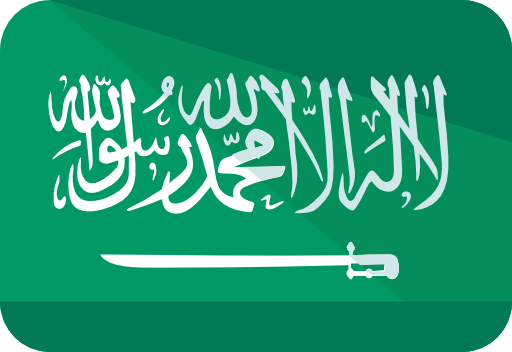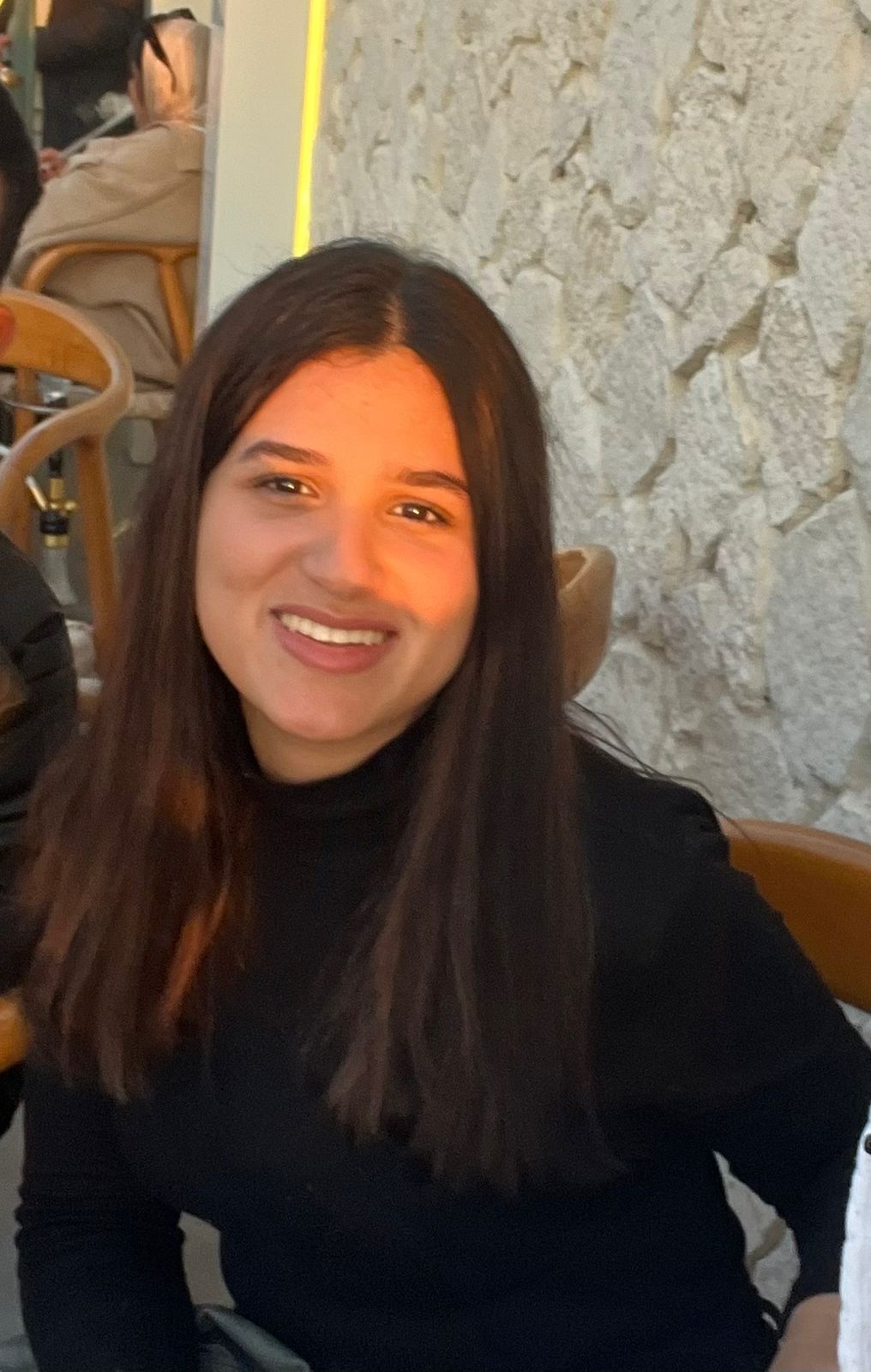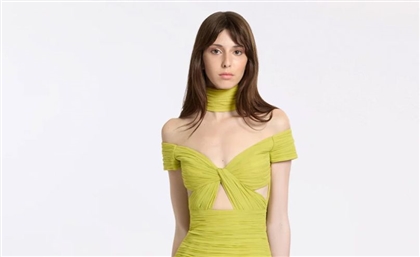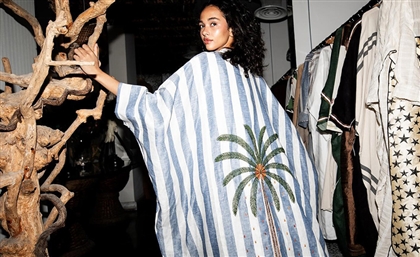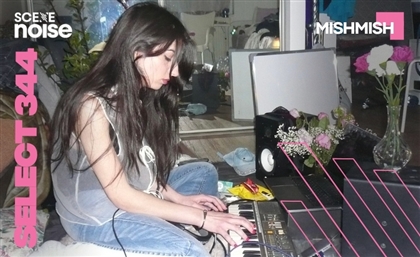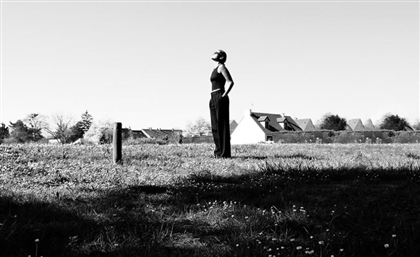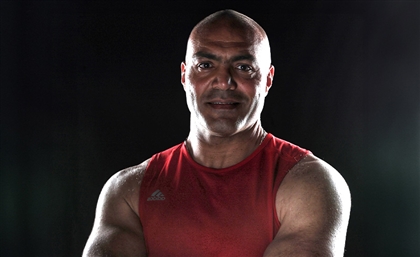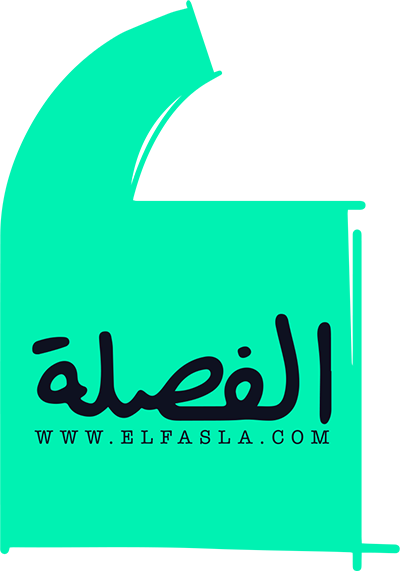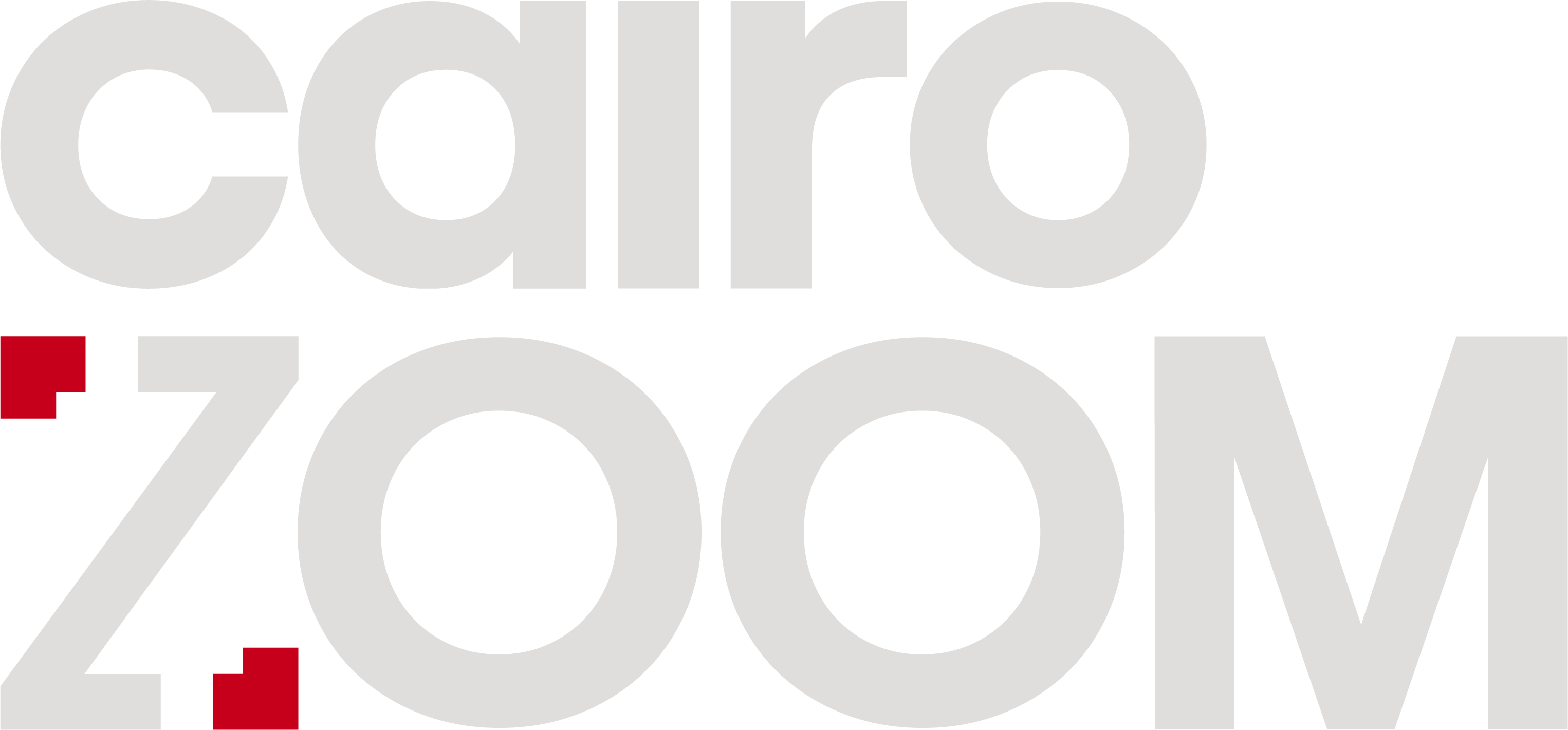In 'Beneath the Desert Sky' House of Vilrique Paints Qatar in Filipino
In Beneath the Desert Sky, designer Vilrick Cruz draws from his upbringing in Qatar and heritage in the Philippines, merging fluid silhouettes with precise craftsmanship.
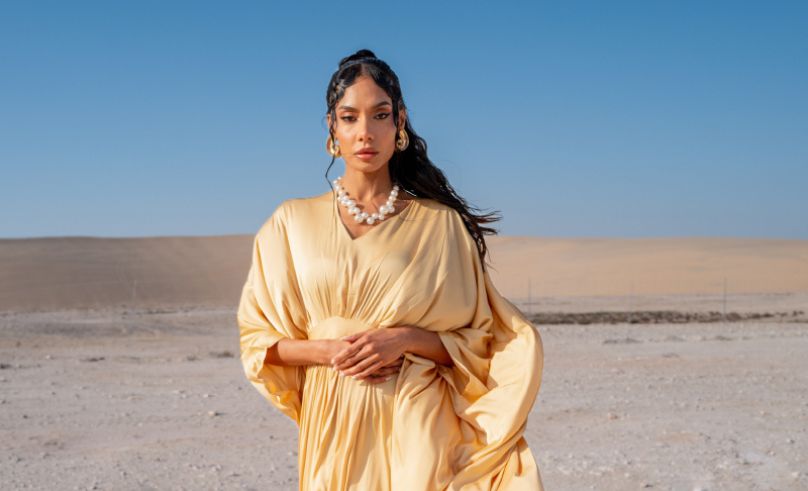
There is something arresting about a garment that knows where it comes from. In Beneath the Desert Sky, designer Vilrick Cruz returns to familiar terrain—both literal and emotional—with a collection that draws from the arid stillness of the Middle East and the quiet pulse of memory.
Raised in Qatar and rooted in the Philippines, Cruz belongs to a generation of designers whose work resists a singular origin. His pieces speak of movement—across cultures, across inner worlds—crafted with a discipline that feels both intuitive and studied.
“I’ve always felt like a nomad,” he says. “Most of my upbringing was in Qatar, a country that’s very conservative and often limiting for someone like me who wants to express and explore freely. The Philippines, on the other hand, is where I touched my roots—loud, chaotic, soulful. That contrast taught me how to create with care, but also with nerve.”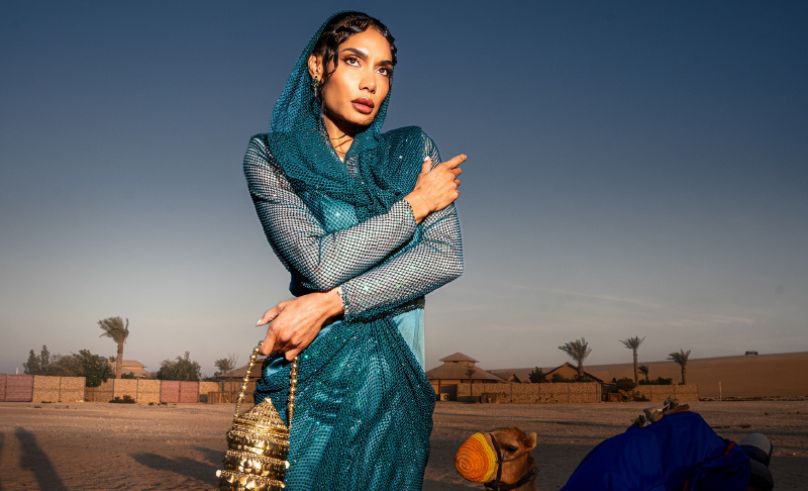 His earlier work was sculptural, almost architectural in its articulation. Structured lines. Artisanal finishes. Fabric manipulated into quiet dramas of form and shadow. But in Beneath the Desert Sky, something loosens. The silhouettes open. There is more air, more drape. The collection was designed during a return to Doha, where Cruz found himself reorienting—creatively, culturally, personally. “It had been years since I came back,” he reflects. “I realised how much the place had changed—and how much I had, too.”
His earlier work was sculptural, almost architectural in its articulation. Structured lines. Artisanal finishes. Fabric manipulated into quiet dramas of form and shadow. But in Beneath the Desert Sky, something loosens. The silhouettes open. There is more air, more drape. The collection was designed during a return to Doha, where Cruz found himself reorienting—creatively, culturally, personally. “It had been years since I came back,” he reflects. “I realised how much the place had changed—and how much I had, too.”
Where his previous collections leaned towards neutral palettes and bold structures, Beneath the Desert Sky introduces jewel tones, silk satins, and chiffons that move with the wind. “This was my first time using vibrant colour,” Cruz explains. “Since it was for Ramadan, I wanted the pieces to reflect celebration. It made sense, aesthetically and emotionally. There’s something powerful about seeing rich colour against a desert backdrop. That contrast stayed with me.”
Though inspired by the environment, the collection is not about mimicry. It is a response to feeling—how wind presses against skin, how drape can become gesture, how fabric can carry memory. Every piece is built to move, yet holds its shape. There is no fuss. Nothing clings. Instead, garments fall in ways that allow the wearer to be present without effort.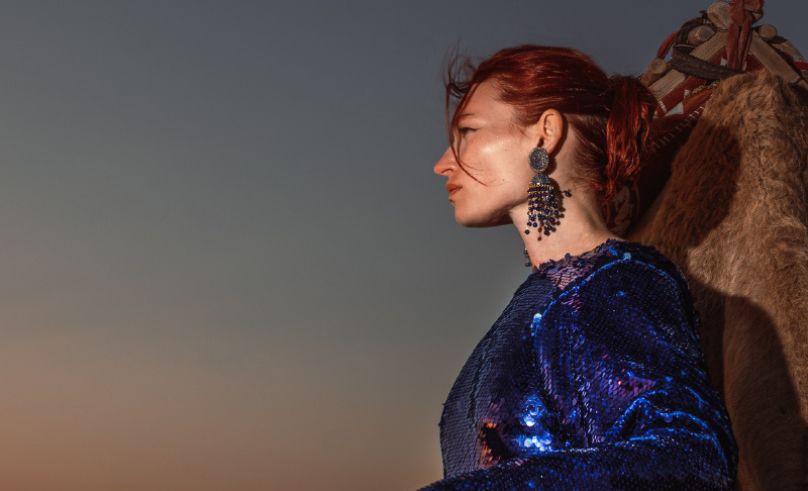 Cruz is deeply attuned to the emotional life of materials. “For this collection, I used silk satin and chiffon—fabrics that breathe, that feel luxurious without screaming. I wanted it to be mindful, especially because this was my first time designing again in the Middle East. There’s a sensitivity to the region, a conservativity I had to respect. But that doesn’t mean you compromise intention.”
Cruz is deeply attuned to the emotional life of materials. “For this collection, I used silk satin and chiffon—fabrics that breathe, that feel luxurious without screaming. I wanted it to be mindful, especially because this was my first time designing again in the Middle East. There’s a sensitivity to the region, a conservativity I had to respect. But that doesn’t mean you compromise intention.”
The result is a collection that reads like a study in poise. Elemental draping. Many pieces seem to suggest wind without replicating it, or recall sand dunes without literal translation. “I was thinking of women I used to see in the desert when I was younger. They were regal. That image stayed with me. I wanted the collection to echo that, but through lightness and presence.”
Cruz calls this approach demi-couture—a mode of design that balances craftsmanship with wearability. It’s couture in detail, but not in preciousness. “In the Middle East, there’s a strong culture of couture and abayas, but I think there’s a hunger for something quieter, more personal. People want boldness—but grounded in something classic. That’s the space I try to design from.”
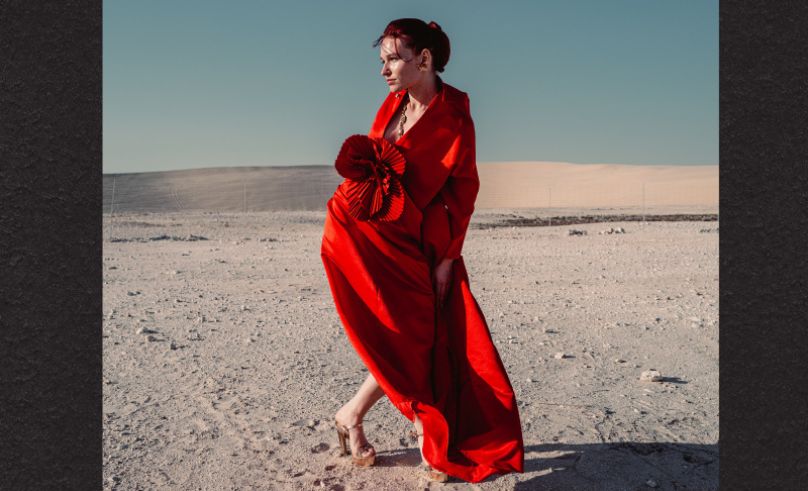 His voice—thoughtful, measured—mirrors his work. There’s no grandstanding, no obsession with shock or novelty. Instead, there is care. There is rhythm. He describes fashion as a form of storytelling. “Each collection begins with something I need to say. I’m not interested in speed. I think fashion needs to slow down. Let people listen to fabric again.”
His voice—thoughtful, measured—mirrors his work. There’s no grandstanding, no obsession with shock or novelty. Instead, there is care. There is rhythm. He describes fashion as a form of storytelling. “Each collection begins with something I need to say. I’m not interested in speed. I think fashion needs to slow down. Let people listen to fabric again.”
Beneath the Desert Sky was photographed in a remote desert resort, The Outpost Al Barari, a location chosen after Cruz’s original idea—a shoot inside a historic Qatari palace—was blocked by strict preservation laws. But the new site, though improvised, offered what the designer wanted: stillness, scale, and a cinematic solitude. “When we got there, it felt like a scene out of Mad Max: Fury Road, but quieter, more poetic. That silence gave the collection space to breathe.”
The collection also marks a turning point. It is his third overall, but the first rooted in the Middle East. “There were moments when I nearly gave up,” he admits. “Moving to Doha felt like things were paused. The creative silence was loud. But I allowed myself to sit with it. I didn’t force my way back. I waited until I had something true to say.”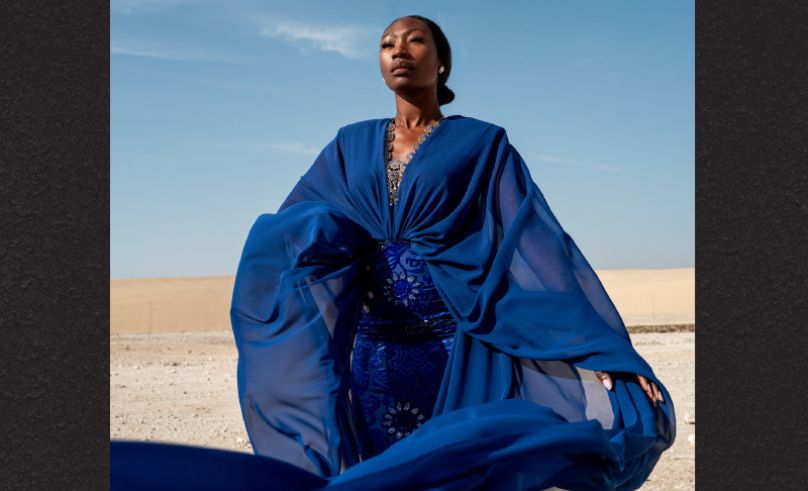 That patience shows. Beneath the Desert Sky carries the calm assurance of a designer who doesn’t need to shout to be heard. The collection is offering presence.
That patience shows. Beneath the Desert Sky carries the calm assurance of a designer who doesn’t need to shout to be heard. The collection is offering presence.
When asked how he hopes the collection will be remembered fifty years from now, Cruz doesn’t hesitate. “I hope it still feels timeless. I hope people see the care in it. The refinement. That it wasn’t made to chase a trend. Just something that meant something. And still does.”
📸Mirco Panaccio
- Previous Article Abdulhalim Radwi, The Man Behind Saudi’s First-Ever Public Art Exhibit
- Next Article SceneNoise x Hiya Dialogues: Sabine Salamé
Trending This Week
-
Jul 15, 2025


